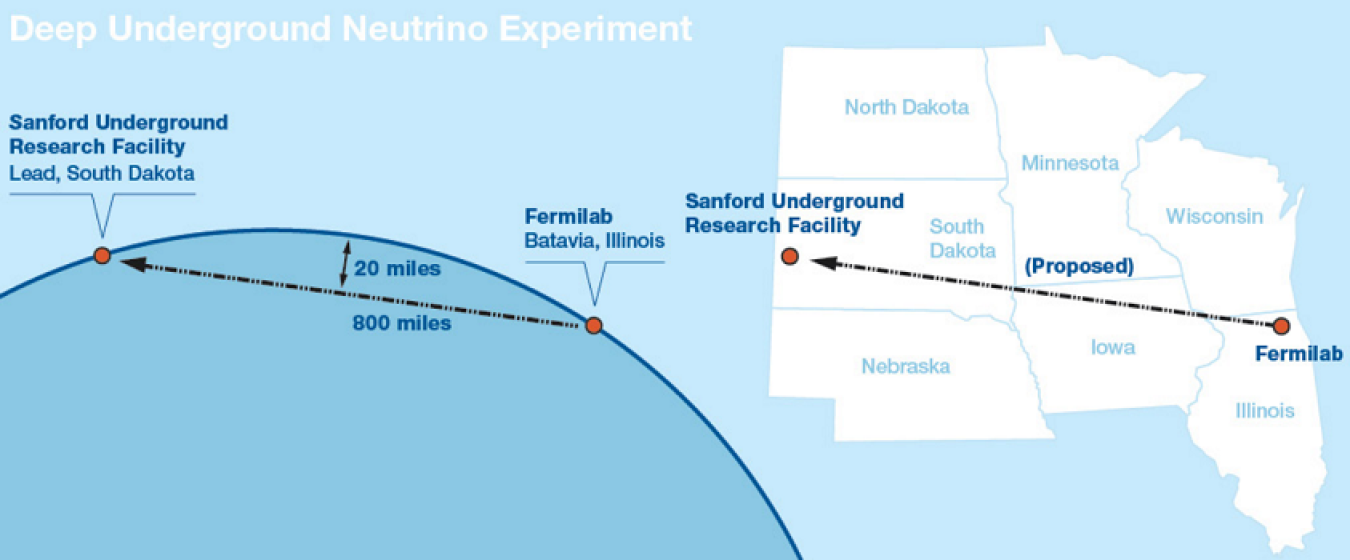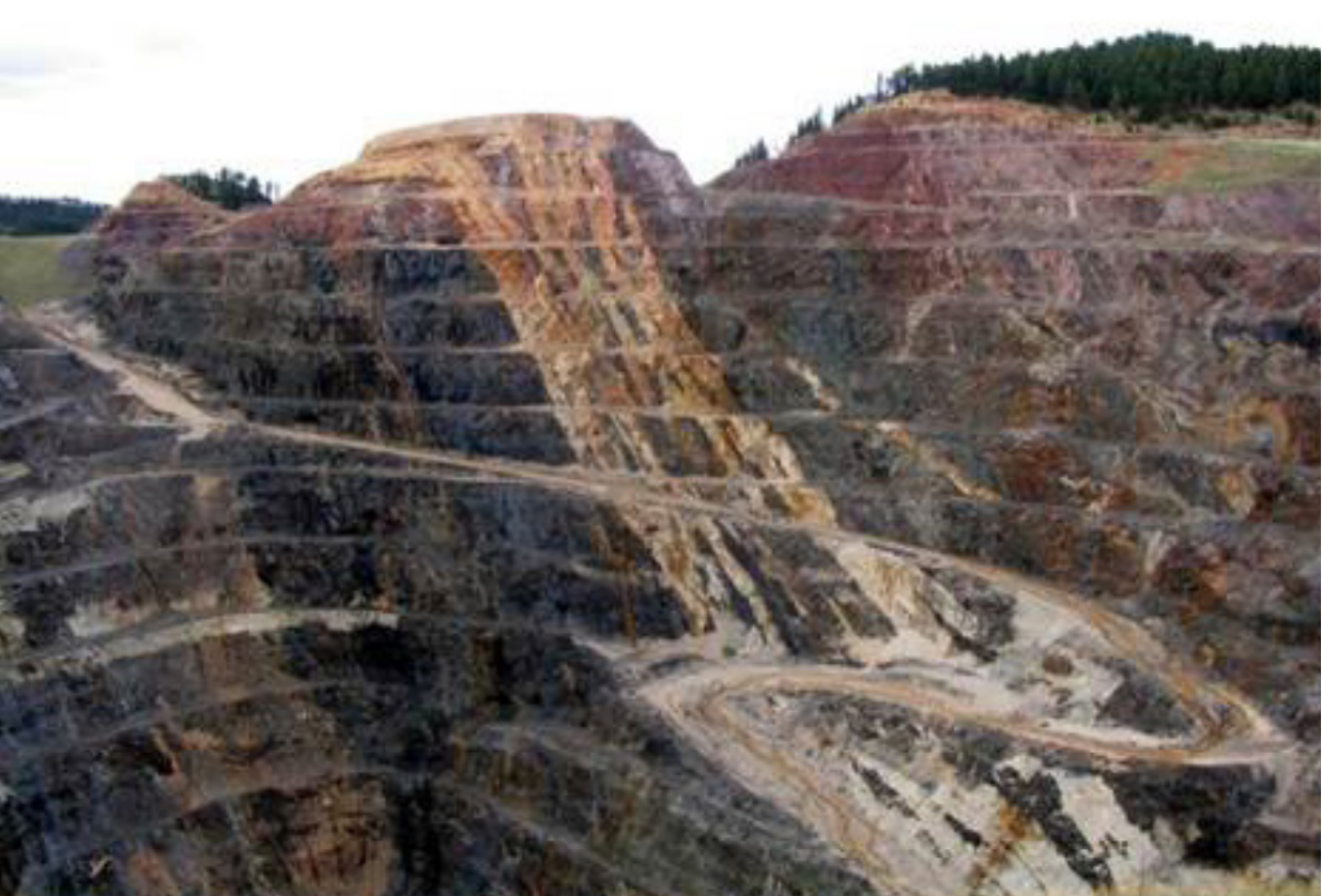An EA for the Long Baseline Neutrino Facility and Deep Underground Neutrino Experiment earned special recognition.
Office of NEPA Policy and Compliance
June 1, 2016By Peter Siebach, NEPA Compliance Officer, Integrated Support Center – Chicago Office
DOE’s Fermi Site Office is pursuing research intended to reveal the mysteries of neutrinos – tiny, subatomic fundamental particles – and determine their role in the make-up of the universe.
To support this research, the Fermi Site Office prepared an EA for the Long Baseline Neutrino Facility (LBNF) and Deep Underground Neutrino Experiment (DUNE) and issued a Finding of No Significant Impact (FONSI) (DOE/EA-1943, September 2015).
The EA preparation team, including three NEPA Compliance Officers (NCOs), received a Special Act Award from the Office of Science. The EA team consisted of Mike Weis (Manager) and Rick Hersemann (NCO), Fermi Site Office; Michelle McKown and Brian Quirke, Chicago Office; Gary Hartman (NCO, now retired), Oak Ridge Office; and Kim Abbott, Berkeley Site Office. I served as the Team Lead, NCO for the LBNF/DUNE Project, and NEPA Document Manager. Our team also was a finalist in the Mission Support Team of the Year competition sponsored by the Chicago Federal Executive Board.
A Unique Project
LBNF/DUNE will employ an existing particle accelerator at the Fermi National Accelerator Laboratory (Fermilab), near Batavia, Illinois, to generate a neutrino beam and direct it 800 miles away. The neutrino beam will travel through the Earth to a detector about a mile below ground at the Sanford Underground Research Facility, a repurposed gold mine in Lead, South Dakota. Neutrinos are so small they can travel directly through the Earth and not be expected to come into contact with a single atom of pre-existing matter.
Neutrinos naturally transform themselves by oscillating back and forth between three different states or “flavors” (muon neutrinos, electron neutrinos, and tau neutrinos). As summarized in the FONSI, “LBNF/DUNE would enable the most precise measurements yet of this neutrino oscillation phenomenon, which could potentially help physicists discover whether neutrinos violate the fundamental matter-antimatter symmetry of the Universe. If they do, then physicists would be a step closer to answering the puzzling question of why the Universe currently is filled preferentially with matter, while the antimatter that was created equally by the Big Bang has all but disappeared.”

Neutrinos created by the LBNF beamline will travel 800 miles to intercept DUNE’s massive, cutting-edge neutrino detector at the Sanford Underground Research Facility.
Successful Partnerships and Outreach
The EA team’s success depended on innovative internal and external partnerships. A charter signed by four Office of Science field organizations assigned decisionmaking to the Fermi Site Office Manager. The DOE national laboratories associated with these offices and Sanford Underground Research Facility (a state laboratory) also signed the charter, ensuring that all involved in preparing the EA understood their responsibilities and were committed to open communications.
These primary partners reached out to other federal, state, and local government stakeholders to negotiate a programmatic agreement under Section 106 of the National Historic Preservation Act for protecting the mining legacy of the Lead Historic District. The team also established consulting relationships with 19 Indian tribes and, as documented in the programmatic agreement, agreed to sponsor educational and cultural initiatives and engage in ongoing consultations to protect cultural properties.
The EA team and partnering organizations conducted seven well-attended public meetings, each with a poster session that facilitated one-on-one interactions. One of the meetings was carried live on local cable television. Some stakeholders expressed concerns regarding potential impacts of the neutrino beams. (“Neutrinos arriving at [Sanford Underground Research Facility], or anywhere along their course from Fermilab, would not result in any radiation exposure,” states the FONSI.)
Other concerns involved potential impacts of facility construction at the Fermilab and Sanford sites (e.g., noise, vibration, groundwater contamination, and disposal of excavated rock). As a result of carefully nurtured partnerships and substantial outreach efforts, public concerns were addressed and critical stakeholder relationships were strengthened.
LBNF/DUNE is the largest project currently in development by the Office of Science, which is the Nation’s primary supporter of fundamental research in the physical sciences. The participation of more than 700 collaborating scientists and engineers from 23 countries led to LBNF/DUNE being characterized as the “International Mega-Science Project.” Additional information is available on the project’s website or contact me at peter.siebach@science.doe.gov.

The EA analyzed disposal of 800,000 tons of excavated rock, conveyed by truck or conveyor system to the Homestake Mine Open Cut. Lead’s City Commission in May unanimously approved the conveyor system, the EA’s preferred alternative.

